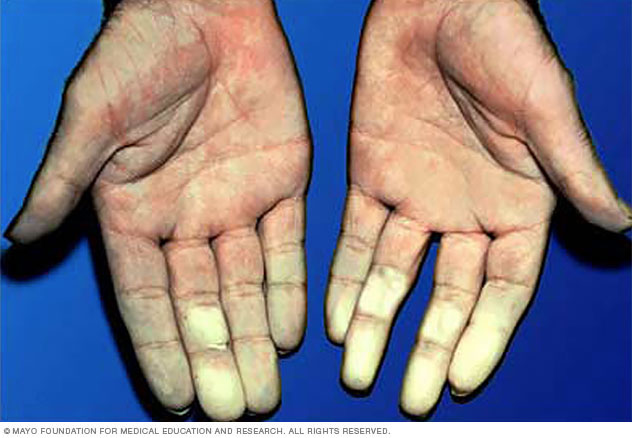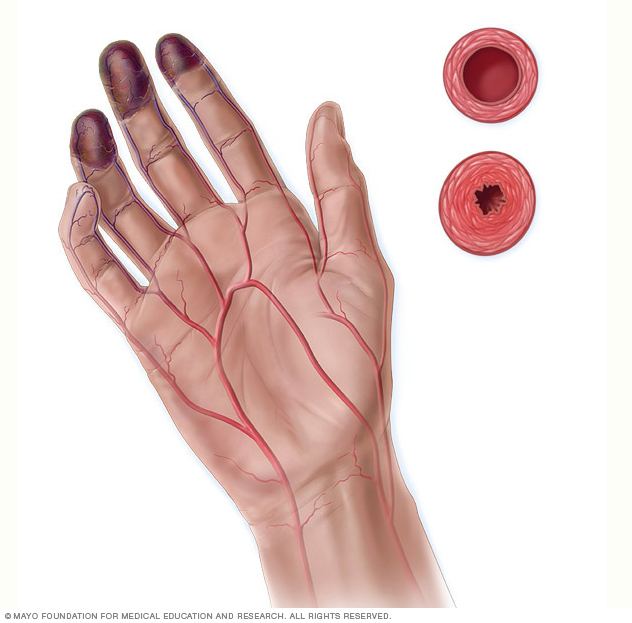Cold hands
![]() May, 15th, 2024
May, 15th, 2024
Summary
Feeling like your hands are always cold may not be cause for concern. But sometimes a blood vessel or nerve problem is to blame. Learn the causes of cold hands.
Definition
, Definition, ,
It’s common to have cold hands even when you’re not in a cold environment. Usually, having cold hands is just one of the ways the body tries to control its temperature. It may not be a cause for concern.
However, always having cold hands could be a warning sign of a health problem, especially if the skin changes color. For example, having cold hands and skin color changes in extremely cold weather could be a warning sign of frostbite.
Symptoms to watch for when you have cold hands include:
- Cold feet or toes.
- Changes to the color of the skin on the hands.
- Numbness or tingling.
- Open sores or blisters.
- Tightened or hardened skin.
Causes
There are many causes of cold hands. Some aren’t a cause for concern. Others may need medical treatment.
Cold hands may be caused by simply being in a cold room or other chilly place. Cold hands often are a sign that the body is trying to control its regular body temperature.
But always having cold hands could mean there’s a problem with the blood flow or the blood vessels in the hands.
Health conditions that can cause cold hands include:
- Anemia
- Buerger disease
- Diabetes
- Frostbite
- Lupus
- Raynaud’s disease
- Scleroderma

Raynaud’s disease causes smaller blood vessels that supply blood flow to the skin to narrow in response to cold or stress. The affected body parts, usually fingers and toes, might turn white then blue. Depending on your skin color, these color changes may be harder or easier to see. The affected areas may feel cold and numb until blood flow improves, usually after warming up.

Raynaud’s disease causes smaller blood vessels that supply blood flow to the skin to narrow in response to cold or stress. The affected body parts, usually fingers and toes, might turn white then blue. Depending on your skin color, these color changes may be harder or easier to see. The affected areas may feel cold and numb until blood flow improves, usually after warming up.

Superficial frostbite, as seen here on the tip of a finger, is most common on the fingers, toes, nose, ears, cheeks and chin.

Superficial frostbite, as seen here on the tip of a finger, is most common on the fingers, toes, nose, ears, cheeks and chin.

In Buerger disease, the small blood vessels of the feet and hands become blocked with blood clots. Over time, skin tissue is damaged or destroyed. Open, painful sores develop on the toes and fingers. Not using tobacco is the best way to stop the disease from getting worse.
Buerger disease When to see a doctor
Make an appointment for a health checkup if you’re concerned about always having cold hands. Tests may be done to learn if your cold hands are caused by a blood vessel or nerve condition. Treatment depends on the cause of your cold hands.
© 1998-2025 Mayo Foundation for Medical Education and Research (MFMER). All rights reserved. Terms of Use



